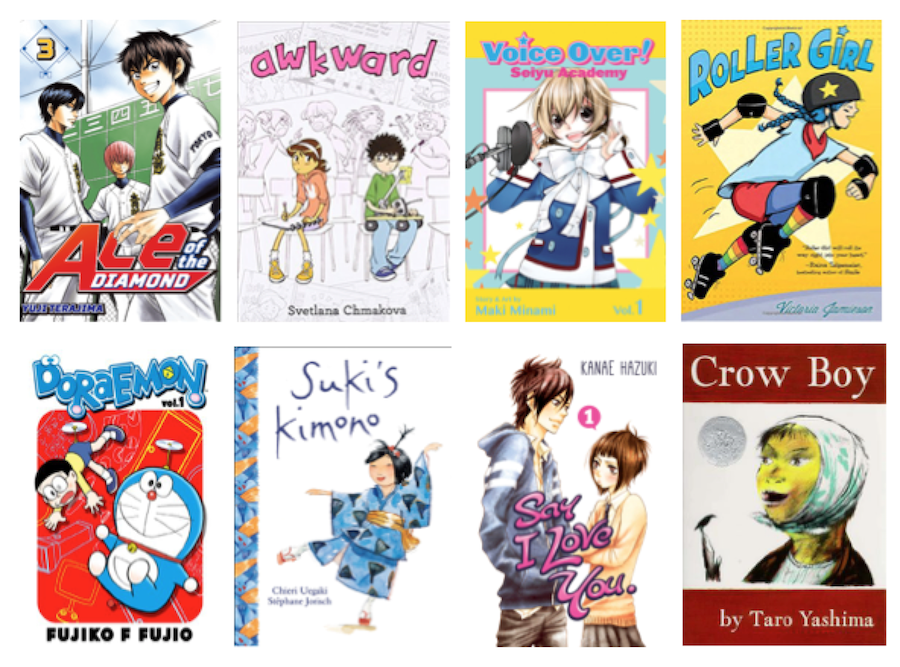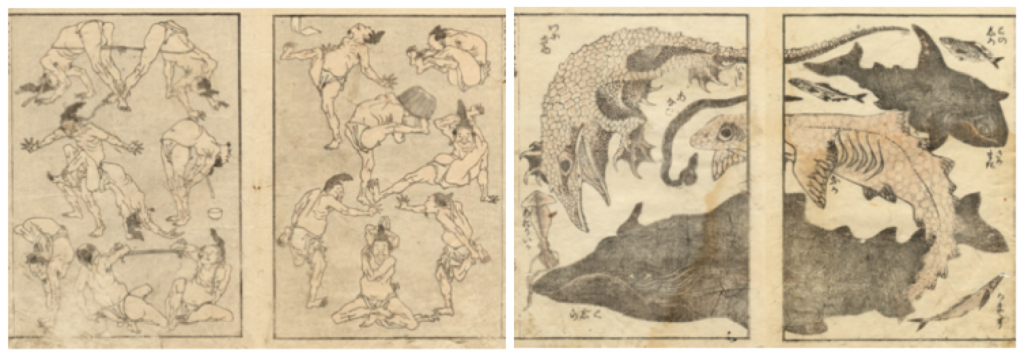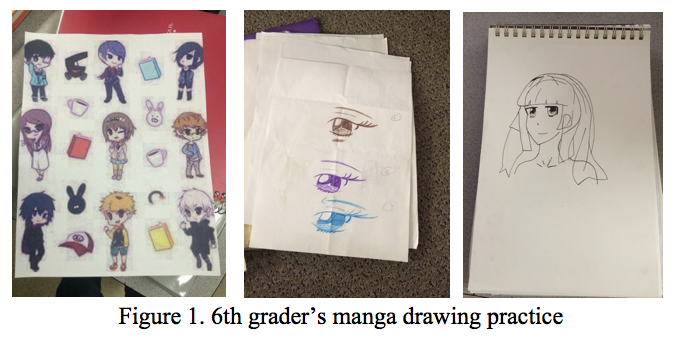By Junko Sakoi, Tucson Unified School District and Yoo Kyung Sung, University of New Mexico
Graphic novels are entertaining for teachers and students. Lately we see more teachers adopt graphic novels in their classrooms. Manga may not be the same. Manga have a wide range of volume numbers and often have long series. Many teachers may not be able to monitor the entire volume sets in their busy schedule. We wonder what will happen if manga are mixed with other children’s books, specifically culturally diverse books. I, Yoo Kyung, often observe that students don’t always grab multicultural books when they have other choices (even in Albuquerque, “the Land of Enchantment”.) Book covers with different ethnic groups are not always their passion. Mixing manga within a text set may interest students in multicultural books through common themes and topics, not by category of “diverse” books. Intertextuality pursued by themes and topics attract students to read.






